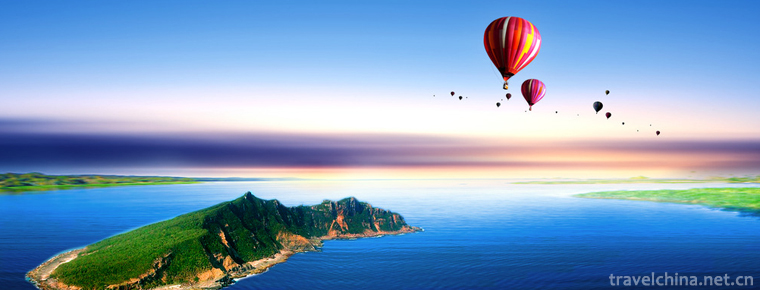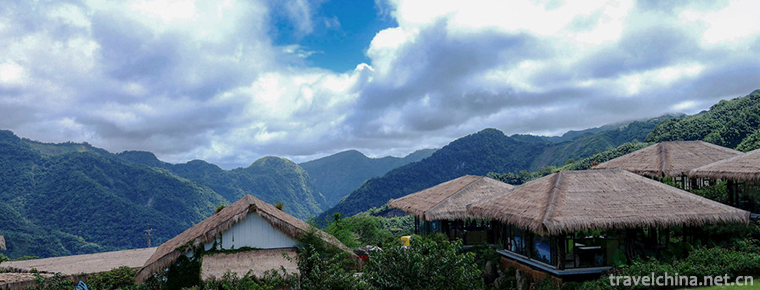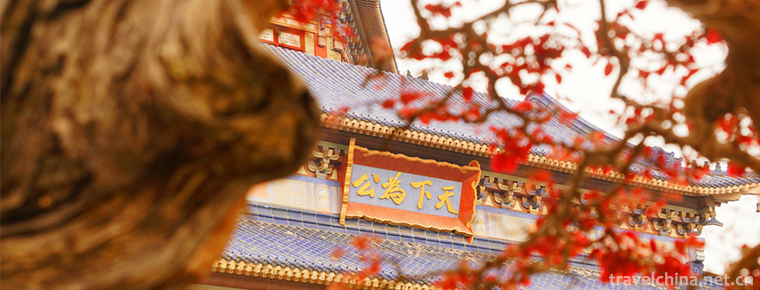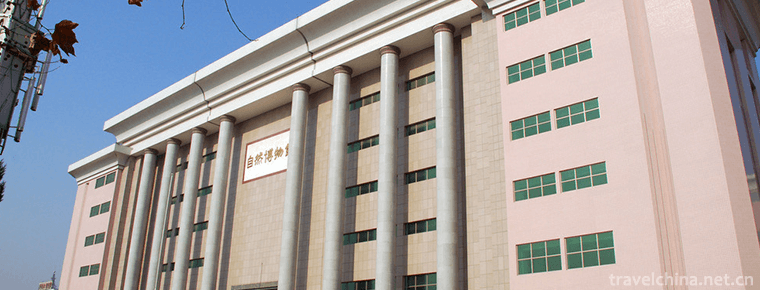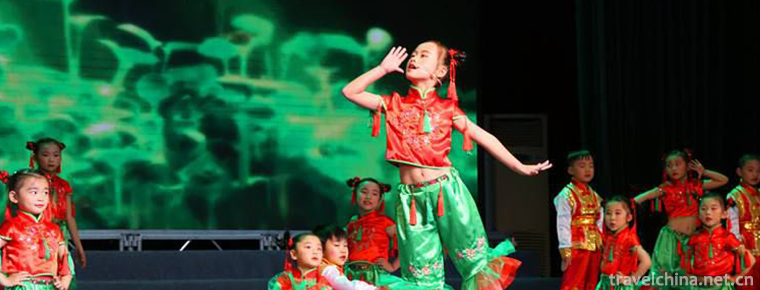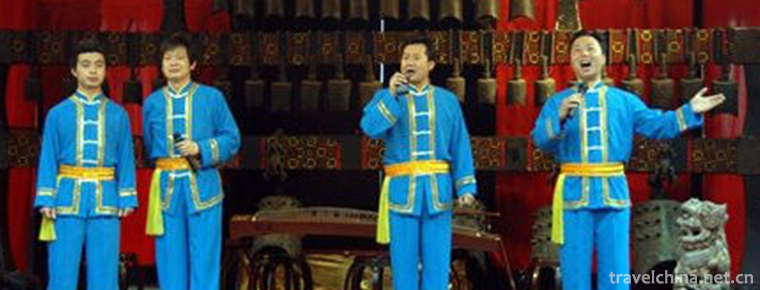Liupanshan National Forest Park
Liupanshan National Forest Park is located in the center of the triangle formed by Xi'an, Yinchuan and Lanzhou. It is located in the south of Ningxia. It spans two counties and one district in Jingyuan, Longde and Yuanzhou District of Ningxia. It covers a total area of 678,800 hectares and the main peak of Mitangshan Mountain is 2942 meters above sea level. The forest cover rate is over 80%, the annual average temperature is 5.8 C, the annual precipitation is 676 mm, and the annual average relative humidity is 60-70%. It is an important water conservation forest base in Northwest China.
In the second year of Qin Shihuang's reunification of China, 220 B.C., he roamed the western and northern parts of Longxi and returned to the Middle Palace with his 39-year-old heroism; in the 24 years of Emperor Wudi of Han Dynasty, he traveled six to six Panshan mountains.
In the Yuan Dynasty, Genghis Khan, a proud generation, set up his military base in Liupanshan, and his descendants, Montgomery Khan, Kublai Khan, the Southern Song Dynasty, Dali and Yehuo, started from Liupanshan and took Liupanshan as their base.
Liupanshan is also the last big mountain that Mao Zedong led the Chinese Red Army of Workers and Peasants to climb. Since then, the Chinese revolution has embarked on a smooth road. Mao Zedong left Qianzhuang Shanhe's Qingping Music Liupanshan.
In December 2006, Liupanshan National Forest Park was rated AAAA-level ecotourism area by the National Tourism Administration.
geographical environment
Location context
Liupanshan National Forest Park is located in the center of the triangle formed by Xi'an, Yinchuan and Lanzhou. It is located in the south of Ningxia. It spans two counties and one district in Jingyuan, Longde and Yuanzhou District of Ningxia. It covers a total area of 678,800 hectares and the main peak of Mitangshan Mountain is 2942 meters above sea level. This is the combination of the farming culture of the Central Plains and the nomadic culture of the North. It is a necessary place for the northern road in the eastern section of the ancient Silk Road and a military fortress for the warriors of all dynasties.
climate
The climate of Liupanshan is a transitional zone from semi-humid to semi-arid in the middle temperate zone. It has the characteristics of continental and marine monsoon margin climate. It has low temperature in spring, little rain, short hail in summer, early autumn cloudy, waterlogging and frost, long cold winter and abundant light resources. The annual average temperature is 5.8 C, the annual precipitation is 676 mm, and the annual average relative humidity is 60-70%.
Landforms
Liupan Mountain is one of the youngest mountain ranges in China. It is formed by Himalayan orogeny and Blue Mountain movement. It is located at the junction of Qinling and Longshan Mountains and is a narrow mountain range with a north-south trend. The main peak is located in the beautiful mountain south of the monk, with an elevation of 2942 meters.
General situation of resources
The forest coverage of Liupanshan National Forest Park is over 80%, and there are 788 species of plant resources. Vegetation types include both horizontally zonal forests and grasslands, and vertical vegetation landscape composed of low-mountain meadow grassland, broad-leaved mixed forest, coniferous-broad-leaved mixed forest and broad-leaved dwarf forest in the vertical band spectrum of mountain vegetation. The main tree species are Populus davidiana, Betula, Quercus liaotungensis, Mixed Tilia, Acer, Salix mandshurica, Pinus armandii and so on. Under the forest, many arrowhead bamboo, hazelnut and many shrubs develop gray cinnamon soil. The meadow grassland and dry grassland are on the sunny slope below the forest belt and 2200 meters below; the weed meadow is on the sunny slope above 2200 meters and on the shady slope above 2600 meters, and the mountain meadow soil is developed, which is a good pasture for livestock. Wildlife resources are abundant, only medicinal plants are more than 600 species, Dangshen, Astragalus membranaceus, Fritillaria fritillaria, Taoerqi and other medicinal materials sell well throughout the country.
Liupanshan Forest Park has a national class of protected animals, including leopard, forest musk deer, red belly pheasant, spoon chicken and golden carving. There are about 200 species of vertebrates, including 38 species of mammals such as leopard and musk deer. There are 147 species of birds, including Golden carving, red belly pheasant, and 905 species of 123 families in 17 orders. Among them, there are rare golden bat moths, vermicelli butterflies, black phoenix butterflies and water wax moths.
Main attractions
Wild Lotus Valley Scenic Area
Wild lotus Valley is about 10 kilometers long. The two sides of the valley are cliffs. There are wild Chinese pine covered with rocky cliffs in the valley, Chinese pine and larch forests on gentle slopes and at the bottom of the valley, and aquatic wild rhubarb lodgers, i.e. wild lotus, on the river bed. At the end of the canyon is an ice waterfall, and the road along the bend of the river bed is the Chitou Road that Qin Shihuang visited in that year.
Xiaonanchuan Scenic Area
Xiaonanchuan is the trump-card scenic spot of Liupanshan Mountain and one of the main sources of Jinghe River. It consists of many scenic spots, such as Ancient Tree Pool, Acacia Water, Birch Bend, Red Birch Forest, Flying Flow Down, Dragon Girl Bath and so on. Liuquan Falls, known as "Xiaojiuzhai" reputation.
Liangdian Gorge Scenic Area
Liangdian Gorge is a place where a generation of proud Genghis Khan troops. Liangdian Gorge means a cool valley. Located deep in the shady and sunny Grand Canyon in the hinterland of Liupan Mountain, the canyon is about 20 kilometers long.
Erlong River Ghost Gate Scenic Area
Guimen Pass Scenic Area of Erlong River is a scientific exploration route. It is not allowed to enter without professional tour guides.
Erlong River is the main source of Jinghe River. The Canyon is 20 kilometers long. It is the core area of Liupanshan Nature Reserve and the most abundant area of wildlife and wildlife. There are well-preserved primitive forests in the area, which are composed of scenic spots such as osmanthus cliff, chrysanthemum jian, little ghost gate, town ghost pagoda, falling pool, ninth step water and mushroom stone. After five o'clock in the afternoon, leopards often appear.










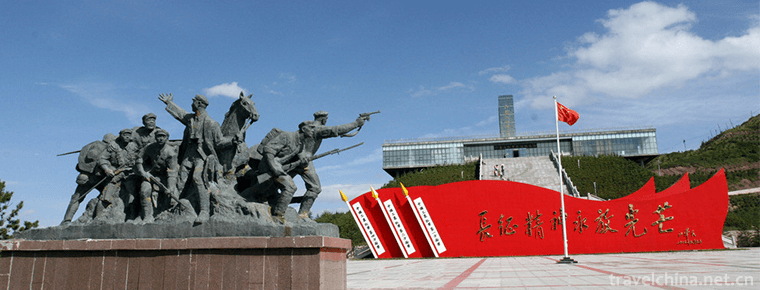
-
Ali Mountain
Mount Alishan, located 75 km east of Jiayi City, Taiwan Province, is located at an altitude of 2,216 meters. Its coordinates are 23 degrees north and 31 minutes east.
Views: 270 Time 2018-10-30 -
The Siberian Tiger Park
Located on the North Bank of Songhua River, the Northeast Tiger Forest Park covers an area of 1.44 million square meters and is adjacent to the Sun Island Scenic Area. Among them.
Views: 167 Time 2018-12-19 -
Sun Yatsen Memorial Hall
Zhongshan Memorial Hall is located in Dongfeng Middle Road, Yuexiu District, Guangzhou City, Guangdong Province. It was built by the people of Guangzhou and overseas Chinese to commemorate Dr. Sun Yat.
Views: 148 Time 2018-12-22 -
Floral water bay hot spring resort
Huashuiwan Hot Spring Resort is located at the foot of Xiling Snow Mountain in Dayi County, Chengdu, Sichuan Province, surrounded by mountains on all sides. National AAAA scenic spot..
Views: 215 Time 2019-01-17 -
Shandong Tianyu Natural Museum
Shandong Tianyu Natural Museum is located in the western section of Lianhuashan Road, Pingyi County, Linyi City, Shandong Province. It is the largest natural geological museum and the largest dinosaur.
Views: 262 Time 2019-02-08 -
Browns Folk Songs
The folk songs of the Browns are rich in content and many melodies. Every time they get married, move to a new house, celebrate New Year's Day or work, young people .
Views: 170 Time 2019-04-04 -
Dang Tu folk songs
Dangtu Folk Song is one of the national intangible cultural heritages of the local traditional music in Ma'anshan City, Anhui Province..
Views: 242 Time 2019-04-25 -
Xiushan Folk Song
Xiushan folk song is the folk song of Xiushan Tujia and Miao Autonomous County. Folk songs are closely related to the people's lives of all ethnic groups in Xiushan. Through compiling folk songs, the .
Views: 119 Time 2019-07-08 -
Guangyuan Tourism
In 2018, the city has 1 AAAAA scenic spot, 19 AAAA scenic spots, 18 AAA scenic spots and 8 AA scenic spots. In the whole year, it received 50.2886 million tourists, an increase of 11.4%. The total income of the tourism industry was 41.953 billion yuan, an increase of 25.4%..
Views: 199 Time 2020-12-15 -
Neijiang population
By the end of 2019, the total population of Neijiang's household registration was 4 million 81 thousand and 800, a decrease of 35 thousand and 900 from the end of last year, of which 2 million 103 thousand and 400 were male and 19 thousand were reduced.
Views: 346 Time 2020-12-16 -
Yibin scenic spot
South Sichuan Bamboo Sea is a national AAAA tourist attraction, covering an area of 120 square kilometers and a core scenic area of 44 square kilometers. There are eight main scenic areas, two major scenic spots and 134 scenic spots. In 2009, it was se.
Views: 362 Time 2020-12-18
